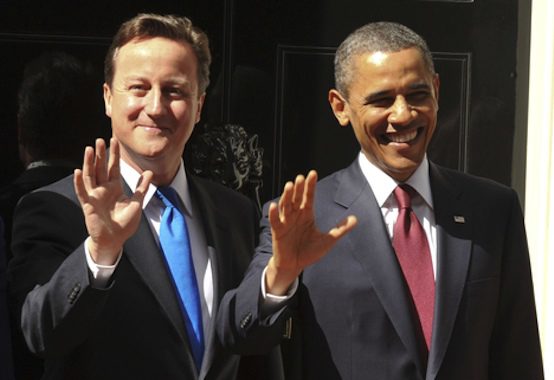Conservatism’s Generational Shift, ‘Swivel-Eyed Loons’ Edition

As Prime Minister David Cameron was visiting the U.S. last week, his party stumbled into another public-relations pit when an unnamed high-ranking associate of the prime minister’s was quoted characterizing the party’s activists as “mad, swivel-eyed loons.” (The comment was made in private, but within earshot of journalists.) That followed on UKIP’s impressive showing in local elections and a Tory backbench revolt against Cameron’s push for same-sex marriage, which passed with more members of the prime minister’s party voting against it than for it.
Hugo Rifkind in the Spectator traces these troubles to a generational divide:
Speaking almost factually, it’s pretty unlikely that the Tory grass roots are ‘swivel-eyed loons’. By most estimates, their average age is somewhere between 65 and 70, and swivelling your eyes behind bifocals rather defeats the purpose. Meanwhile, according to a poll by Survation this week, 33 per cent of those over 65 would vote Ukip tomorrow, and 13.4 per cent of everybody else would. Similarly, according to an ICM poll earlier this year, 37 per cent of over-65s fancy the idea of gay marriage, compared with 72 per cent of those below. This is glaring stuff.
… let us recognise Mr Cameron’s difficulty for what it is. Which is, essentially, that he faces a concerted fightback from an older generation that feels the world slipping from its fingers, and has had enough.
Or if you prefer, we can put the bellicosity on the other side, and identify an aggressive move … by a younger generation — or, to be more accurate, a couple of younger generations — who realise the world is finally theirs and wish to brand it with their stamp. This is why equal marriage, in particular, has become such a big deal, despite affecting relatively few people. It’s not just a symbol. It’s an early skirmish, between those who feel it is time to stop just living in their country and start owning it, and those who have owned it until now and don’t want to let it go.
It’s not just a matter of assertiveness, though. In the UK as well as the U.S., the cultural backdrops against which the older and the younger cohorts have grown up have been so different as to lead quite naturally to widely divergent views—indeed, opposite views of what constitutes stability and crisis, or who is aggressing against whom.
The Republican Party is in the same boat as Cameron’s Conservatives: however “grand” the GOP may or may not be, it is certainly the Old Party. National Journal‘s Charlie Cook observed earlier this year:
While Republicans still do better than Democrats among voters 40 and older, particularly those over 65, they are losing to Democrats among voters in their 30s—and losing badly among those under 30. As someone who just turned 59, I can make this next provocative statement: Democrats are doing better among voters who can be considered the future. Republicans are doing well among those who could be described as the pre-dead.
What’s true of the party is true of its ideology’s media organs as well. Last September, the Pew Research Center for the People and the Press reported:
As was the case two years ago, The Colbert Report and The Daily Show have the youngest audiences of the 24 news sources tested: 43% of Colbert’s regular audience is younger than 30, as is 39% of the Daily Show’s regular viewers. Just 23% of the public is 18-to-29.
Regular readers of the New York Times also tend to be younger than average. Nearly a third (32%) of regular Times readers – are younger than 30.
In contrast, political talk shows, particularly conservative talk programs, have older audiences. Large majorities of the regular viewers of Sean Hannity (66%) and The O’Reilly Factor (64%) are 50 and older. Just 43% of all Americans are 50 and older. And while just 17% of the public is 65 and older, 42% of regular Hannity viewers and 40% of regular O’Reilly viewers are in that age category.
Hard demographics for Rush Limbaugh’s audience aren’t easy to come by, but there’s little reason to think the story there is much different.
The challenge facing conservatives on either side of the Atlantic is not simply to “modernize” their message but to discover what the characteristic form of conservatism for the post-Cold War generation looks like. The pitched battles conservatives fought in the 19th century over the relative status of different forms of Christianity and concerning extensions of the franchise and the rights of the lower classes are utterly unintelligible to the activists of today—most of whom would probably sympathize in retrospect with the radicals of the earlier era. Trying to formulate conservatism in the absence of historical context is doomed to fail. And when the historical context changes, the form of conservatism will eventually do so as well.
Comments